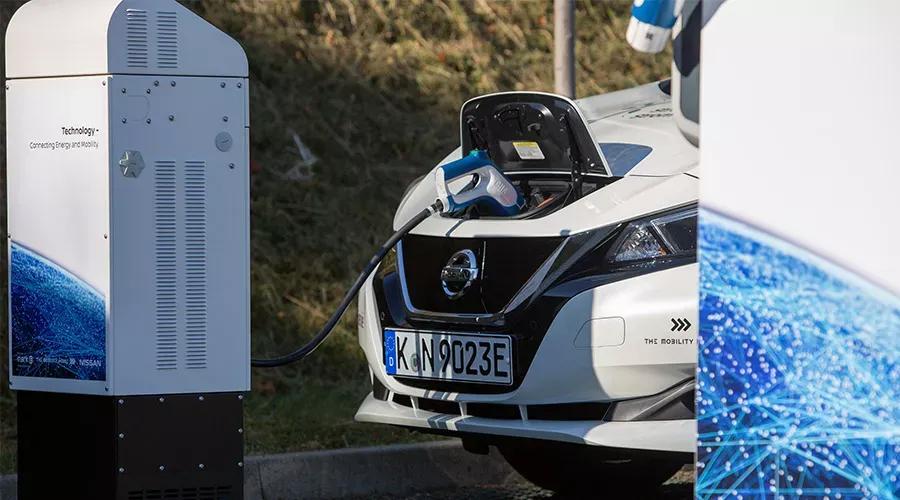Electric cars are more expensive to purchase than comparable models with a combustion engine, and electricity is not free either. However, an electric car can become part of the energy market, enabling it to make money. This prospect for the future is one step closer to becoming a reality, thanks to the V2G pilot project conducted with Enervie in Hagen. V2G stands for Vehicle to Grid. As soon as the vehicle is connected to the charging station, the battery of a Nissan Leaf acts both as energy storage and as an energy source.
"We have demonstrated that integrating electric cars into primary control power is both technically and economically beneficial."
Thomas Raffeiner,
CEO and founder, The Mobility House
The company's vehicle is parked in the car park at Enervie, an energy supplier based in Hagen. As part of primary control power, the electric car absorbs excess energy from the power grid within a matter of seconds, or supplies energy as needed. Transmission network operators are willing to pay for this quick reacting capacity because it keeps the power grid stable. Power outages only occur in exceptional cases.
More revenue than expenses for electricity
"Using the vehicle, we offered eight kilowatts of power over the course of a week and earned 20 euros in the process. This amount might seem low at first glance. But this is just one car providing its storage capacity. Over 50 weeks, that would be 1,000 euros."
Marcus Fendt,
Managing Director, The Mobility House
That would be more than enough to cover the annual power consumed by an electric car. V2G technology is particularly attractive for fleet operators. More cars mean more storage capacity, and downtimes on the weekend or during holidays are easy to plan for company vehicles. Payment for primary control power is determined weekly in an auction process. Starting in 2019, this will be allocated daily, offering more flexibility to owners when it comes to vehicle use.
Resourceful use of batteries
It could take a few years for the debut in Hagen to become routine business for everyone who drives an electric car. There are still obstacles in terms of prices for charging technology and regulatory hurdles. But in the commercial sector, where larger fleets are used, Fendt is convinced we will soon see practical applications of V2G. He does not accept the argument that frequently charging and discharging the battery will shorten its usable life.
"In our collaboration with the Technical University of Munich, we have just demonstrated how charging management can positively impact battery life."
Marcus Fendt,
Managing Director, The Mobility House
Grid stability and grid expansion
Looking at the long term, not all electric cars will be integrated into primary power control. Stabilizing and relieving the power grid is an equally important function. If more cars absorb excess power from the grid that cannot be transported, and this power is only returned to the grid when there is available capacity, the volume of grid expansion can be reduced. The pilot phase has now been completed in Hagen. The Nissan Leaf is now in regular operation as stationary storage. As soon as the CHAdeMO plug is connected to the front of the vehicle, this white car helps to stabilize the German power grid.
